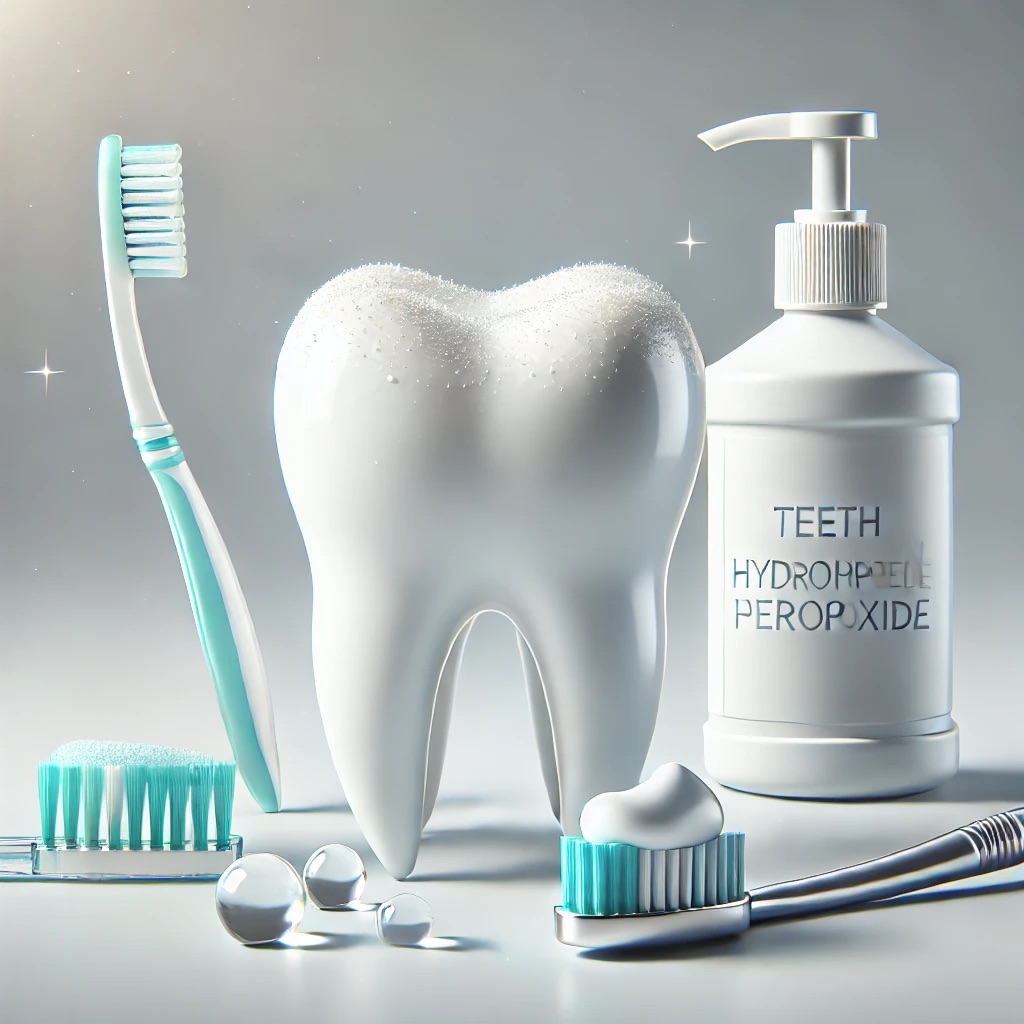Meta Description: Discover the best methods for removing stains after teeth whitening, including tips on maintaining a bright smile, avoiding future discoloration, and effective at-home remedies.
Summary
Teeth whitening treatments, coordinated through our trusted partner clinics, can significantly brighten your smile. However, stains may reappear over time due to dietary choices or lifestyle habits. In this post, we’ll explore how to remove stains after teeth whitening, including at-home remedies, professional options, and tips for keeping your teeth white longer.
Introduction: How to Remove Stains After Teeth Whitening
Teeth whitening can dramatically improve your smile, but even after professional or at-home treatments, stains can sometimes reappear over time. Whether from food, drinks, or lifestyle habits, these stains can dull your newly whitened smile. So, how can you remove stains after teeth whitening and keep your teeth looking their best? This guide, based on advice from our partner clinics, will take you through the most effective ways to remove post-whitening stains, how to avoid them in the future, and how to maintain your bright smile.
Why Do Teeth Stain After Whitening?
After a teeth whitening treatment, your teeth become more porous for the first 48 hours, which makes them more susceptible to staining. Foods and beverages like coffee, tea, red wine, and certain sauces can easily re-stain teeth during this period. Additionally, habits like smoking or poor oral hygiene can cause stains to return over time.
Focus Keyword in Context: Many patients wonder, "How can I remove stains after teeth whitening?" The key lies in maintaining good oral hygiene and using safe, effective methods to eliminate any discoloration that develops.
1. Brush with a Whitening Toothpaste
One of the easiest ways to remove surface stains after teeth whitening is by using a whitening toothpaste. These toothpastes contain mild abrasives that help scrub away stains without damaging your enamel. Look for a toothpaste with the American Dental Association (ADA) seal of approval, which ensures it’s safe for daily use.
How to Use Whitening Toothpaste:
- Brush your teeth twice a day with a soft-bristled toothbrush and a whitening toothpaste.
- Focus on gentle circular motions to remove surface stains without causing sensitivity.
While whitening toothpastes are effective at removing surface stains, they won’t lighten deeper stains. For more stubborn discoloration, you may need to explore other methods.
2. Try Baking Soda and Hydrogen Peroxide
A natural and cost-effective way to remove stains after teeth whitening is by using baking soda and hydrogen peroxide. Baking soda acts as a mild abrasive to scrub away surface stains, while hydrogen peroxide works as a natural bleaching agent.
How to Use:
- Mix 1 teaspoon of baking soda with 2 teaspoons of hydrogen peroxide to create a paste.
- Brush your teeth with this mixture for 1-2 minutes, then rinse thoroughly with water.
- Use this method 2-3 times a week to avoid enamel erosion.
Be sure to use this mixture sparingly, as excessive use can damage your enamel.
Focus Keyword in Context: If you're looking for a natural solution to remove stains after teeth whitening, try a combination of baking soda and hydrogen peroxide for effective at-home results.
3. Consider Whitening Strips for Quick Touch-Ups
If you notice your teeth starting to stain again after whitening, whitening strips can be a convenient and effective option for quick touch-ups. These over-the-counter strips contain bleaching agents like hydrogen peroxide and can be used to brighten your teeth without needing a full whitening treatment.
How to Use Whitening Strips:
- Follow the instructions on the package, applying the strips to your teeth for the recommended amount of time (usually 15-30 minutes).
- Use strips for several days in a row depending on how much whitening you need.
Whitening strips are great for removing surface stains and maintaining the brightness of your teeth between professional treatments.
4. Rinse with Hydrogen Peroxide Mouthwash
Hydrogen peroxide is not only a great stain remover but also helps kill bacteria and promote healthy gums. Using a hydrogen peroxide mouthwash can help maintain the whiteness of your teeth by preventing new stains from forming.
How to Use:
- Mix equal parts hydrogen peroxide (3% solution) and water.
- Swish the mixture in your mouth for 30-60 seconds, then spit it out.
- Rinse your mouth with water afterward and brush your teeth.
Use this method a few times a week to prevent new stains and maintain your whitening results.
5. Schedule a Professional Touch-Up Treatment
If at-home remedies aren’t enough to remove stains after whitening, consider scheduling a professional touch-up with your dentist. Dentists can offer a stronger whitening solution that penetrates deeper into your enamel, effectively removing stubborn stains.
Types of Professional Whitening Touch-Ups:
- In-office whitening: This procedure uses high-concentration whitening agents and light activation to brighten your teeth quickly.
- Custom at-home whitening trays: Your dentist can create custom trays that fit your teeth perfectly and provide a stronger whitening gel than over-the-counter products.
Professional touch-ups are ideal for maintaining your whitening results over time, especially if you regularly consume staining foods and drinks.
6. Avoid Staining Foods and Drinks
One of the most effective ways to remove stains after teeth whitening is to avoid letting them form in the first place. Certain foods and drinks are notorious for causing stains, and avoiding or limiting these can help prolong your whitening results.
Foods and Drinks to Avoid:
- Coffee and Tea: These dark beverages are among the biggest culprits for tooth staining. If you must have your coffee or tea, try drinking through a straw to minimize contact with your teeth.
- Red Wine: The deep color of red wine can quickly stain teeth, so it’s best to limit your intake or switch to white wine.
- Berries and Dark Fruits: Fruits like blueberries, blackberries, and cherries can leave behind pigments that stain your teeth.
If you do consume any of these foods or drinks, be sure to brush your teeth or rinse your mouth with water afterward to reduce staining.
7. Use a Straw for Dark Beverages
A simple way to prevent new stains from forming after whitening is to use a straw when drinking dark-colored beverages like coffee, tea, or soda. This minimizes contact between the liquid and your teeth, reducing the chances of staining.
8. Practice Good Oral Hygiene
Maintaining a good oral hygiene routine is key to keeping your teeth white and removing any new stains that form after whitening. Be sure to brush and floss regularly to keep plaque and tartar buildup at bay, as these can cause discoloration.
Best Oral Hygiene Practices:
- Brush twice a day with a soft-bristled toothbrush and fluoride toothpaste.
- Floss daily to remove plaque and food particles between your teeth.
- Rinse with mouthwash to keep your mouth clean and fresh.
By sticking to a regular oral care routine, you can remove surface stains and prevent new ones from forming.
Frequently Asked Questions About Removing Stains After Whitening
1. Can I use whitening toothpaste after teeth whitening?
Yes, whitening toothpaste can help remove surface stains and maintain your results. However, avoid using abrasive whitening toothpastes immediately after your treatment to prevent sensitivity.
2. How long do teeth whitening results last?
With proper care, teeth whitening results can last anywhere from 6 months to 2 years. Regular touch-ups and avoiding staining foods and drinks can help extend the longevity of your whitening treatment.
3. Can I drink coffee after teeth whitening?
It’s best to avoid coffee for at least 48 hours after whitening to prevent re-staining. If you can’t go without it, use a straw and rinse your mouth with water afterward to minimize staining.
4. How do I remove deep stains from my teeth?
For deeper stains, you may need to schedule a professional whitening touch-up with your dentist, as at-home remedies may not be strong enough.
Conclusion: How to Remove Stains After Teeth Whitening
Maintaining a bright white smile after a teeth whitening treatment is possible with the right care and attention. By using methods like whitening toothpaste, baking soda, and hydrogen peroxide, and avoiding staining foods and drinks, you can effectively remove stains after teeth whitening and keep your smile looking its best. If necessary, professional touch-ups can provide deeper whitening results to tackle more stubborn stains.
For more information on maintaining your teeth after whitening or to explore additional dental treatments, visit Dentist Kusadasi for affordable and effective solutions.
 English
English














